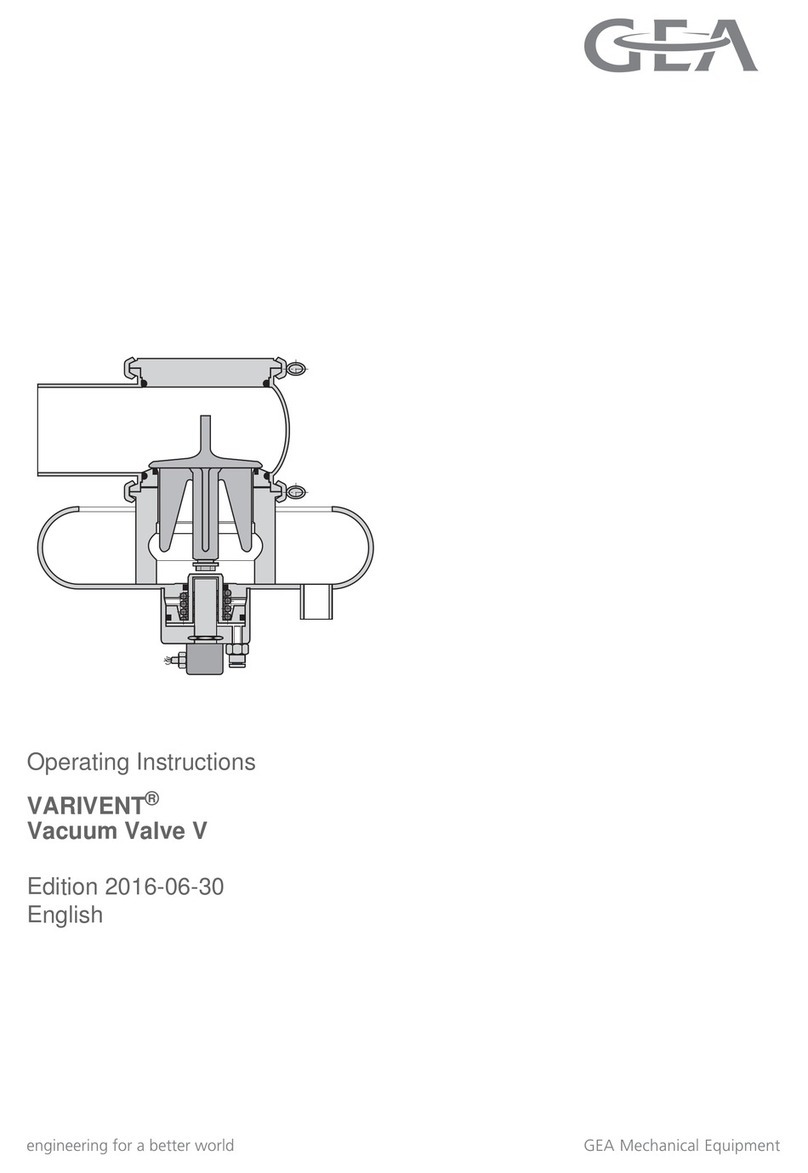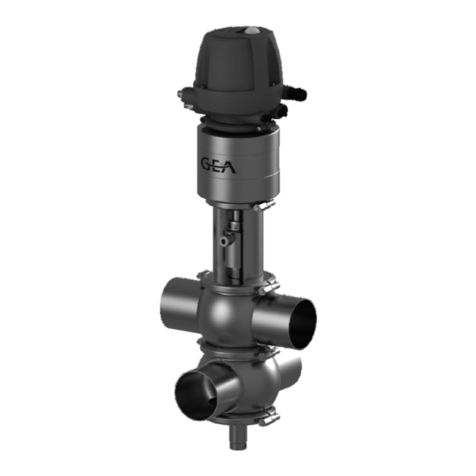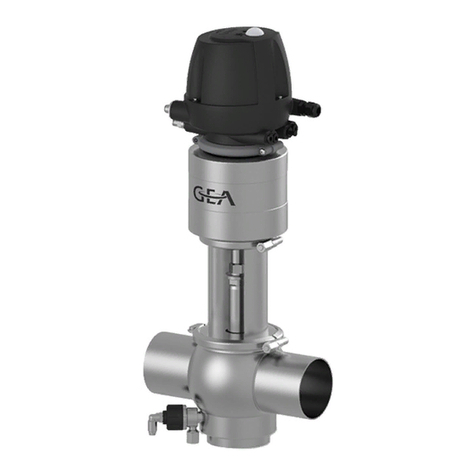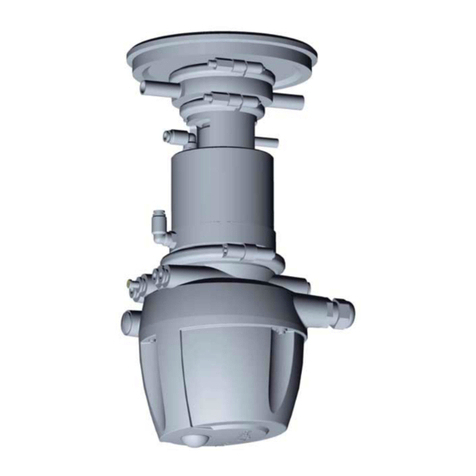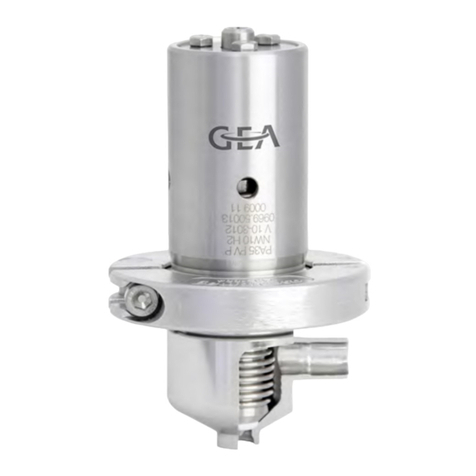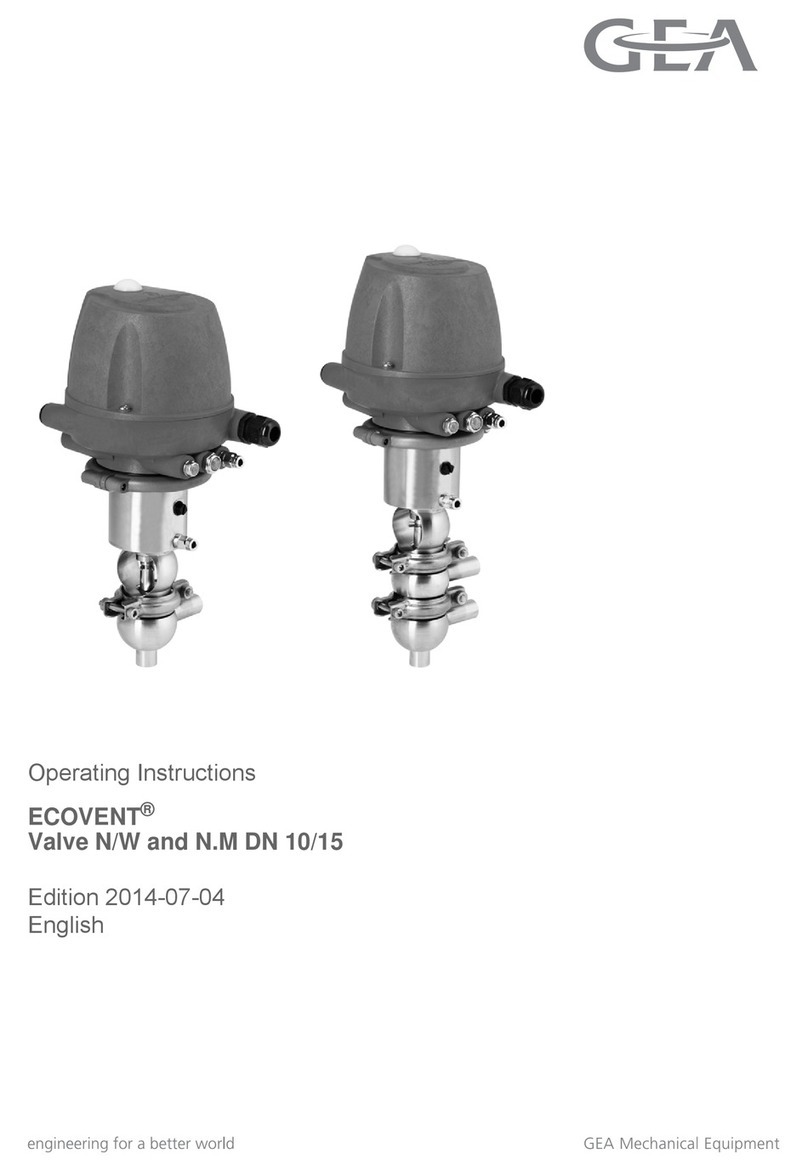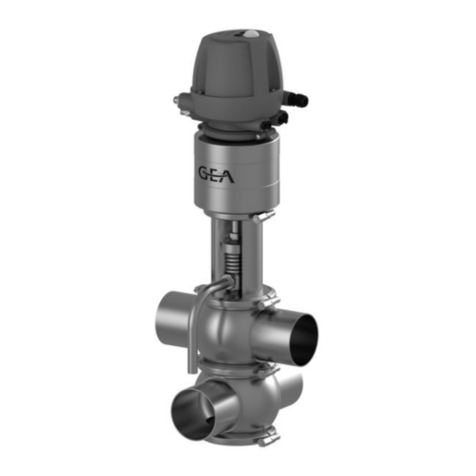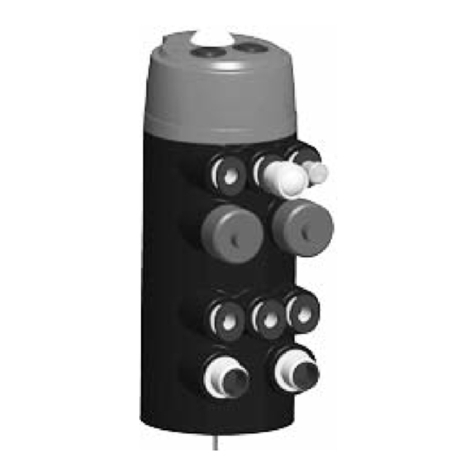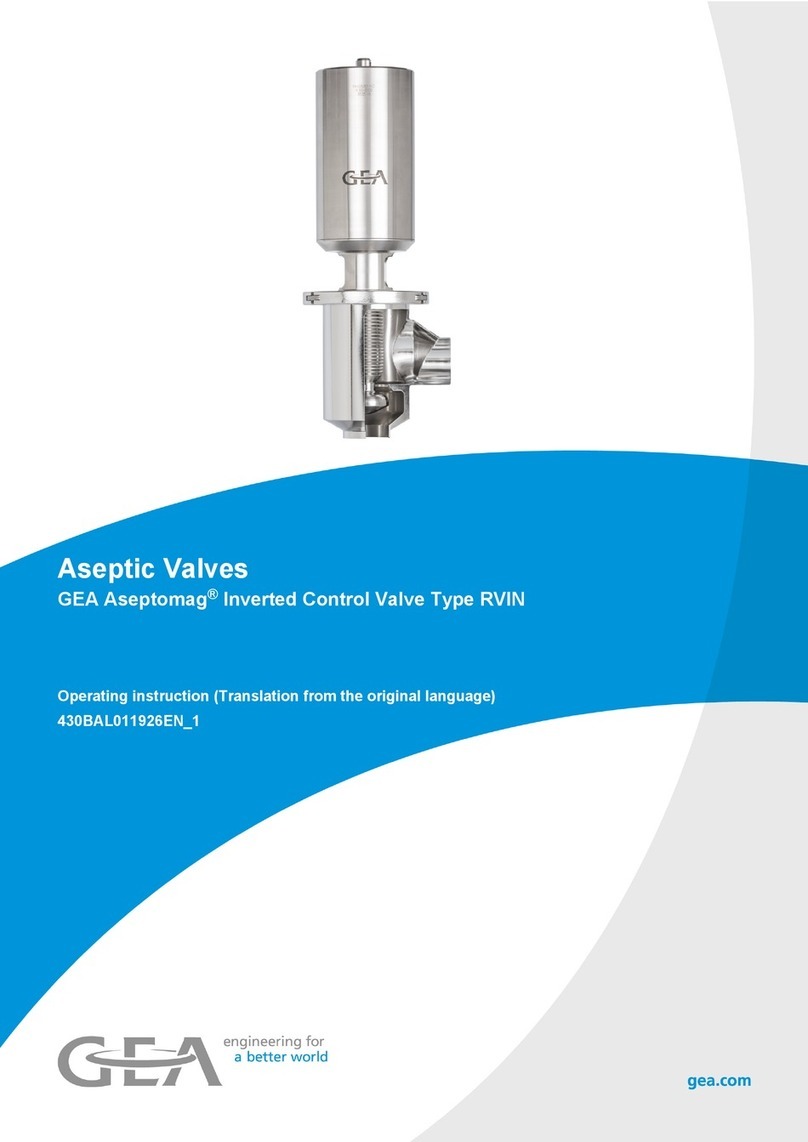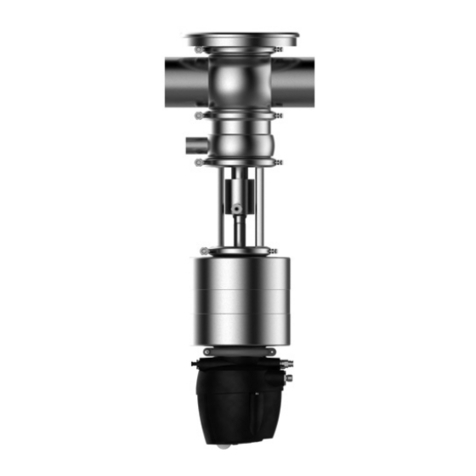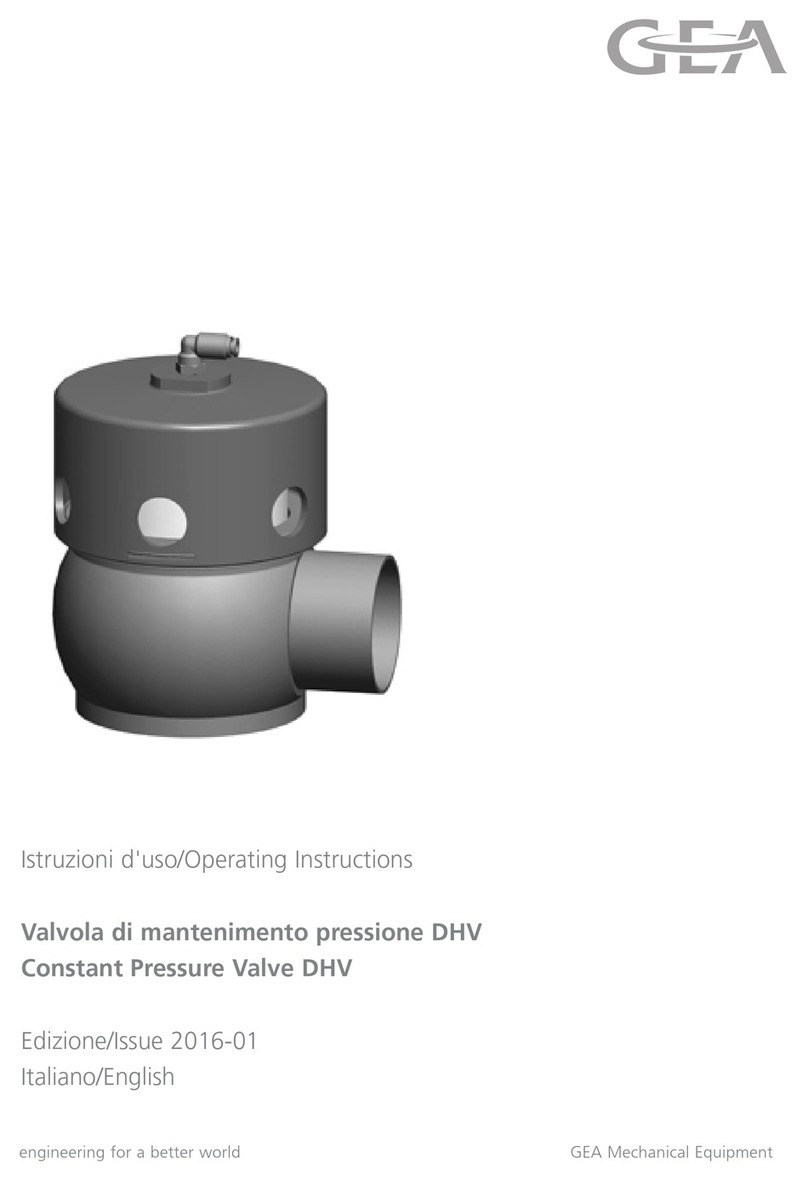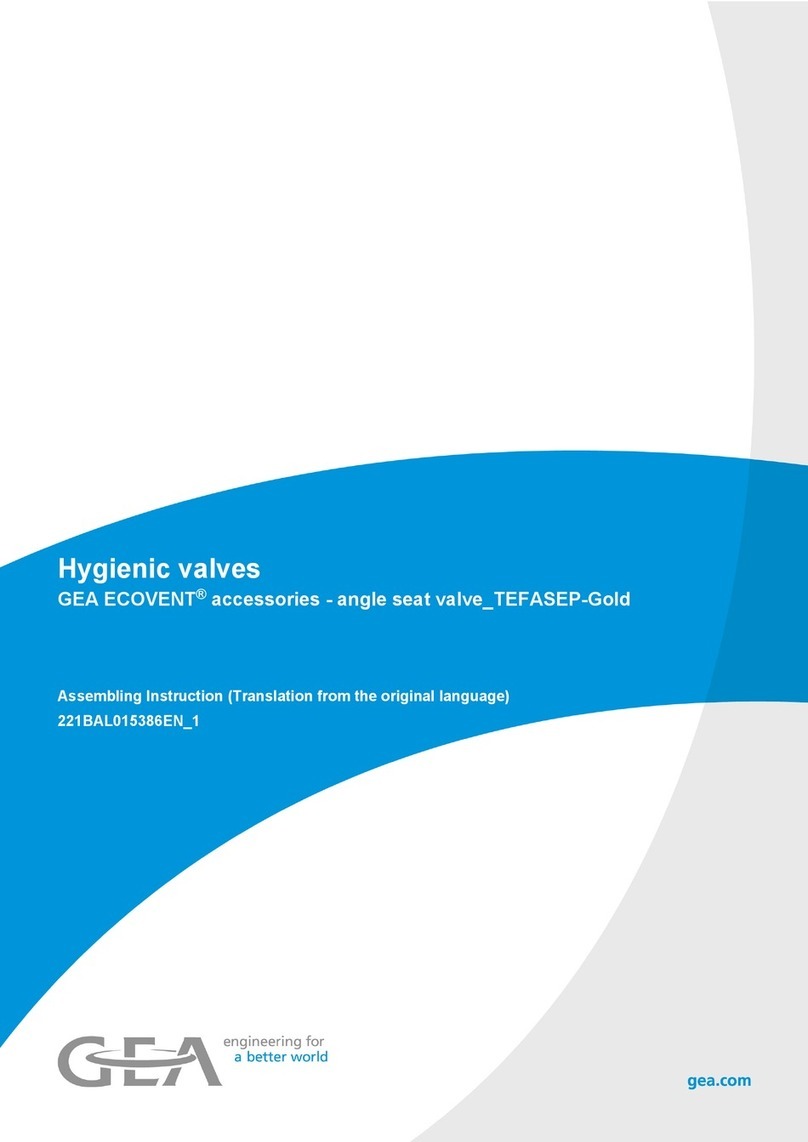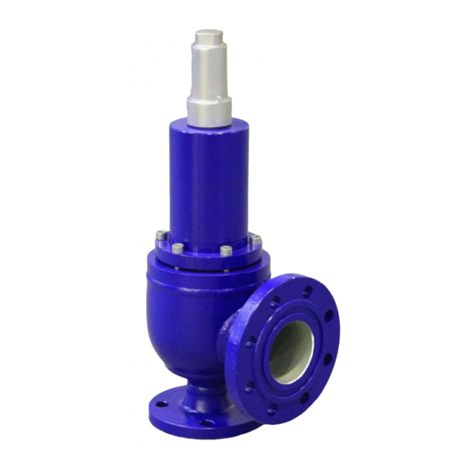
4 / 9
GEA AWP GmbH
Armaturenstr. 2
17291 Prenzlau, Germany
Tel.: +49 3984 8559-0 Fax: +49 3984 8559-18
HRAB_12300 06.06.2019
5. Functional description
AWP-Regulating valves with metal bellow are actuated by
a handwheel.
They are shut off clockwise in viewing direction towards
the operating element and are opened counter-
clockwise.
The valves are regulating and shut-off devices.
By max. stroke the cone release nozzle for regulating.
The diameter of the nozzle is equivalent to the valve
diameter. The valves are equipped with a back sealing (flat
sealing ring R).
When the valve is completely open, it is possible to
replace the sealing elements (O-rings, A, B, PTFE-
ring) at the stem safety by unscrewing bushing.
In case the flow medium reaches extreme temperatures,
the valve must be handled with protective gloves, - danger of
burning -.
Actuating the regulating valve against a liquid in a
closed section should be avoid, as the motion of the stem
sauses a change in volume within the valve body.
This, in turn, causes an inadmissible increase of pressure in
the closed pipe section.
Regulating valves in pipes for liquids have to be shut off in
direction towards a vessel containing gas.
6. Installation
Before installing the valves, the pipelines and the compo-
nents have to be cleaned.
-please notice-
The deviation from the parallelism or squareness of the
welding ends or, as the case may be, the sealing surfaces
of the flanges must not exceed 1°.
The connecting flanges have to be coaxial.
Valves that have been damaged during transport or storage
must not be installed.
After the protective caps have been removed, the valves
can be welded on, or installed in any position. The flow
direction (see arrow on specification label ) should be
observed.
With modern welding processes (suc h as TIG, CO2-
shielded metal-arc), the valves are not disassembled for
welding.
The fastening bolts and nuts have to be tightened crosswise
and evenly. After the installation has been performed, check
whether the hand wheel runs smoothly within its entire lift
range.
After the installation has been performed, check whether
the handwheel runs smoothy within its entire lift range.
The thread of the cover for unscrewing the cap must not be
painted and has to be greased (e.g. with RENOLIT
UNITEMP 2).
-please notice-
For disassembling the valve sufficient space has to be
provided on the side of the cover.
5. Funktionsbeschreibung
AWP-Handregelventile mit Metalbalg sind durch ein
Handrad zu betätigen. Die Ventile werden mit Blickrichtung
auf das Handrad rechts drehend geschlossen und links
drehend geöffnet.
Die Ventile sind Regel- und Absperrarmaturen. Bei
maximalem Hub gibt der Regelkegel die Regeldüse frei.
Der Durchmesser der Regeldüse entspricht der Nennweite.
Die Ventile sind mit einer Rückdichtung ausgerüstet
(Flachdichtring R).
Bei voll geöffnetem Ventil ist der gefahrlose Austausch
der Dichtelemente (O-Ringe A, B, PTFE-Ring) an der
Spindel, durch Herausschrauben der Schraubbuchse
möglich.
Bei extremen Temperaturen ist das Ventil mit
Schutzhandschuhen zu bedienen.
Die Betätigung des Handregelventils gegen eine
eingeschlossene Flüssigkeit ist zu vermeiden, da es durch
die Bewegung der Spindel zur Volumenänderung kommt.
Dies bedingt eine unzulässige Druckzunahme im
abgeschlossenen Rohrabschnitt.
Das Schließen der Handregelventile in Flüssigkeits-
leitungen hat in Reihenfolge zu einem Behälter mit
Gasvolumen zu erfolgen.
6. Einbau
Vor Einbau der Ventile sind Rohrleitungen und Anlagenteile
zu säubern.
-bitte beachten-
Die Abweichung von der Parallelität bzw. Rechtwinkligkeit
der Anschweißenden bzw. Flanschdichtflächen darf 1° nicht
überschreiten.
Anschlußflansche müssen achsengleich sein. Ventile mit
Transport-und Lagerschäden dürfen nicht eingebaut
werden. Nach dem Entfernen der Rohrstopfen können die
Ventile in beliebiger Lage eingeschweißt bzw. montiert wer-
den.
Die Durchflußrichtung (siehe Pfeil auf Kennzeichenschild)
sollte eingehalten werden. Eine entgegengesetzte
Durchflußrichtung ist zulässig, die Leistungsangaben gelten
dann nicht. Bei Anwendung moderner
Schweißverfahren (z.B. WIG, CO2) werden die Ventile
zum Einschweißen nicht demontiert. Das Handrad ist in
Mittelstellung zu bringen. Die Befestigungsschrauben und
Muttern sind über Kreuz und gleichmäßig anzuziehen.
Nach dem Einbau ist die Leichtgängigkeit des Handrades
im kompletten Hubbereich zu überprüfen. Das
Deckelgewinde zum Aufschrauben der Kappe hat farbfrei
zu bleiben und ist zu fetten (z.B. mit RENOLIT UNITEMP 2).
- bitte beachten-
Zur Demontage des Einsatzes ist genügend Platz auf
der Deckelseite vorzusehen.
Ausbaumaß
DN 10 15 20 25 32 40 50 65 80 100 125 150
mm 85 85 85 115 115 130 130 145 170 170 240 270

